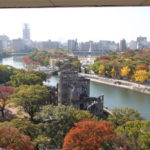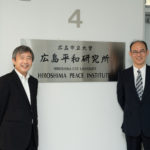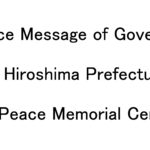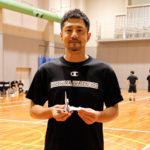4 The Hiroshima Peace Memorial City Construction Law
 Intially, the reconstruction planning (Hiroshima Reconstruction City Planning) encountered many problems such as financial difficulties, lack of human resources and shortages in materials and public land. Due to the catastrophic damage from the bombing, tax revenue was minuscule in Hiroshima City. Among the financial difficulties of the war-ravaged cities across the country, the hardship of Hiroshima was most extreme. In order to cope with these conditions, Hiroshima mayor Shinzo Hamai, city council members, and other local people concerned made strenuous efforts to find a way and lobbied the national government and the Diet. As a result of their efforts, the Hiroshima Peace Memorial City Construction Law was enacted as a special law based on Article 95 of the Constitution of Japan (a law that applies to a specific local public entity) in 1949. The law was supported by the local referendum, and it was promulgated and enforced on August 6 of that year (1949).
Intially, the reconstruction planning (Hiroshima Reconstruction City Planning) encountered many problems such as financial difficulties, lack of human resources and shortages in materials and public land. Due to the catastrophic damage from the bombing, tax revenue was minuscule in Hiroshima City. Among the financial difficulties of the war-ravaged cities across the country, the hardship of Hiroshima was most extreme. In order to cope with these conditions, Hiroshima mayor Shinzo Hamai, city council members, and other local people concerned made strenuous efforts to find a way and lobbied the national government and the Diet. As a result of their efforts, the Hiroshima Peace Memorial City Construction Law was enacted as a special law based on Article 95 of the Constitution of Japan (a law that applies to a specific local public entity) in 1949. The law was supported by the local referendum, and it was promulgated and enforced on August 6 of that year (1949).
Enactment of this special law paved the way for special assistance from the national government, the transfer of national government properties and pushed reconstruction efforts forward. In addition, Hiroshima City was designated a “peace memorial city” under Article 1 of the law, stating, “Hiroshima is to be a peace memorial city symbolizing the human ideal of the sincere pursuit of genuine and lasting peace.” Following the establishment of this law in 1952 the previous “Hiroshima Reconstruction City Plan” was amended to the “Hiroshima Peace Memorial City Construction Plan.” In the course of the amendment, a special project for constructing “peace memorial facilities” was approved, and this made the construction the Peace Memorial Park, one of the special features of the reconstruction plan, possible.
In 1949, a design competition for the Peace Memorial Park was conducted. First prize was awarded to the design submitted by Kenzo Tange’s group. This competition, along with the design competition held the year before by the Catholic church located in Nobori-cho, Hiroshima (today’s Memorial Cathedral for World Peace), attracted attention as a new trend in the field of architectural design, with the keywords of “Hiroshima” and “Peace.”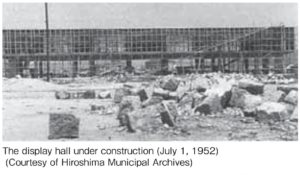 First, the construction of the display hall, which later became the main building of the Hiroshima Peace Memorial Museum, started in February 1951. Then, the construction of the Peace Memorial Hall, today’s Peace Memorial Museum’s East Building, began in March of that year. The construction took a long time because of the tight budget and the buildings were left unfinished for some time. In 1955, four years after the start of construction work, these buildings were completed one after another. At that time, the park itself was still full of homes that residents had been ordered to vacate. These houses were all cleared from the park by 1959, and the park was almost complete.
First, the construction of the display hall, which later became the main building of the Hiroshima Peace Memorial Museum, started in February 1951. Then, the construction of the Peace Memorial Hall, today’s Peace Memorial Museum’s East Building, began in March of that year. The construction took a long time because of the tight budget and the buildings were left unfinished for some time. In 1955, four years after the start of construction work, these buildings were completed one after another. At that time, the park itself was still full of homes that residents had been ordered to vacate. These houses were all cleared from the park by 1959, and the park was almost complete.
The benefits of the Hiroshima Peace Memorial City Construction Law were extensive—not only limited to just such special financial assistance from the national government. The law also provided moral support to the citizens by assuring them that the national government was watching over and assisting them. It seemed that the moral support accelerated the reconstruction. The efforts made by those in Hiroshima were not the only factors that played important roles in Hiroshima’s reconstruction process; the support framework as well as physical and moral support played a significant role.
On the other hand, the reconstruction process in Japan typically started with a public authority that established the infrastructure. Once the land was prepared, what types of buildings would be constructed and how livelihoods would be rebuilt were typically left up to the private sector, such as land owners, building owners, and residents. Though there was a system to provide public loans—but for those in poverty, building their houses on their own was still quite difficult. Many people struggled daily just to get by. The implementation of the Peace Memorial City Construction Plan faced criticism and dissatisfaction from the citizens from time to time, such as disapproval for the land readjustment policies. We also must not forget the burden and sacrifices made on the part of the citizens during reconstruction process.
Inquiries about this page
Hiroshima Prefectural Office
Street address:10-52, Motomachi, Naka-ku, Hiroshima-shi, Hiroshima-ken, 730-8511
Tel:+81-(0)82-228-2111



